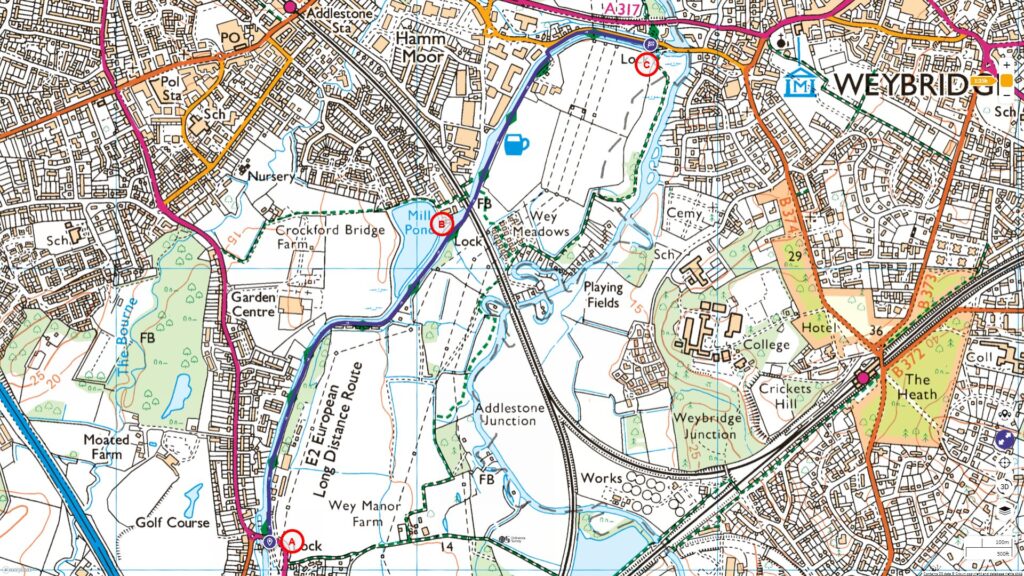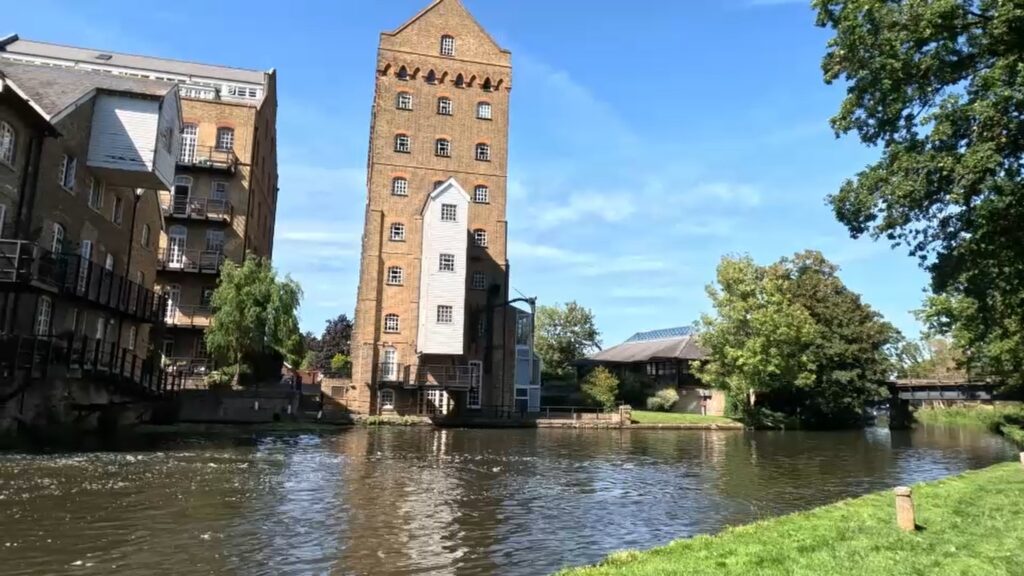This walk leads us past locations that inspired H.G. Wells, towards a Grade II listed building, which functioned as a mill until as recently as 1983.
Follow the entire walk on . The route map is available on
.

B: Cox Lock and Mill
C: Weybridge Town Lock
[A] New Haw Lock
Following a long, unremarkable straight passage bordered by a continuous line of residential properties, the Wey Navigation arrives at New Haw Lock, which has a rise 2 metre. Established in 1653, this lock is awkwardly juxtaposed with the busy bridge of the A318, marking a historically significant crossing point. It is positioned at the edge of what was once the expansive Woking Heath, an area that inspired H.G. Wells (1866 – 1946) to write “War of the Worlds.” Wells, residing near the Woking station when it was a small village surrounded by vast heathland, drew inspiration from this setting.
New Haw Lock, part of the Wey Navigation, has a history stretching back to the 1960s. This lock was among the last on the Navigation to maintain the original half-height timber walls, with the lock structure transitioning to sloping earth covered in turf. Even in the 1980s, the side of the lock nearest the towpath retained a half-height wall, now made of concrete, leading down to an earth bank. However, in line with modern safety standards, New Haw Lock now features vertical sides, aligning with the design of other locks. The lock is situated about 4 km from the Thames. More
[B] Cox Lock and Mill
First opened in 1653, Coxes Lock, with a rise of 2.6, stood alone in the Wey Navigation for more than a century. It holds the distinction of being the deepest unmanned lock on the Navigation and is located 2.4 km from the Thames.
By 1776, an ironmaster had identified the potential of the site and began constructing an iron mill, which eventually became known as Coxes Lock Mill. This mill is widely regarded as the most industrially significant on the Wey, underlined by the fact that it remained operational until 1983, becoming the last commercial mill on the Wey Navigation.
The three buildings of the mill, designated as Grade II listed for preservation, were transformed into residential units after their closure in 1983. They now accommodate a sizable community of apartment residents, drawn to the picturesque setting beside the lock and the expansive mill pond, teeming with wildlife. The complex also features a private gym and swimming pool for residents.
[C] Weybridge Town Lock
Town Lock with a a rise of 1.7m is situated on the western outskirts of Weybridge. It is known among river users for its challenging navigation due to its close proximity to a bridge and a small, awkward entrance. The towpath at this location is disrupted by the bridge. Historically, horses and carters had to cross the road and descend the horse-steps to rejoin the vessels they were towing.

